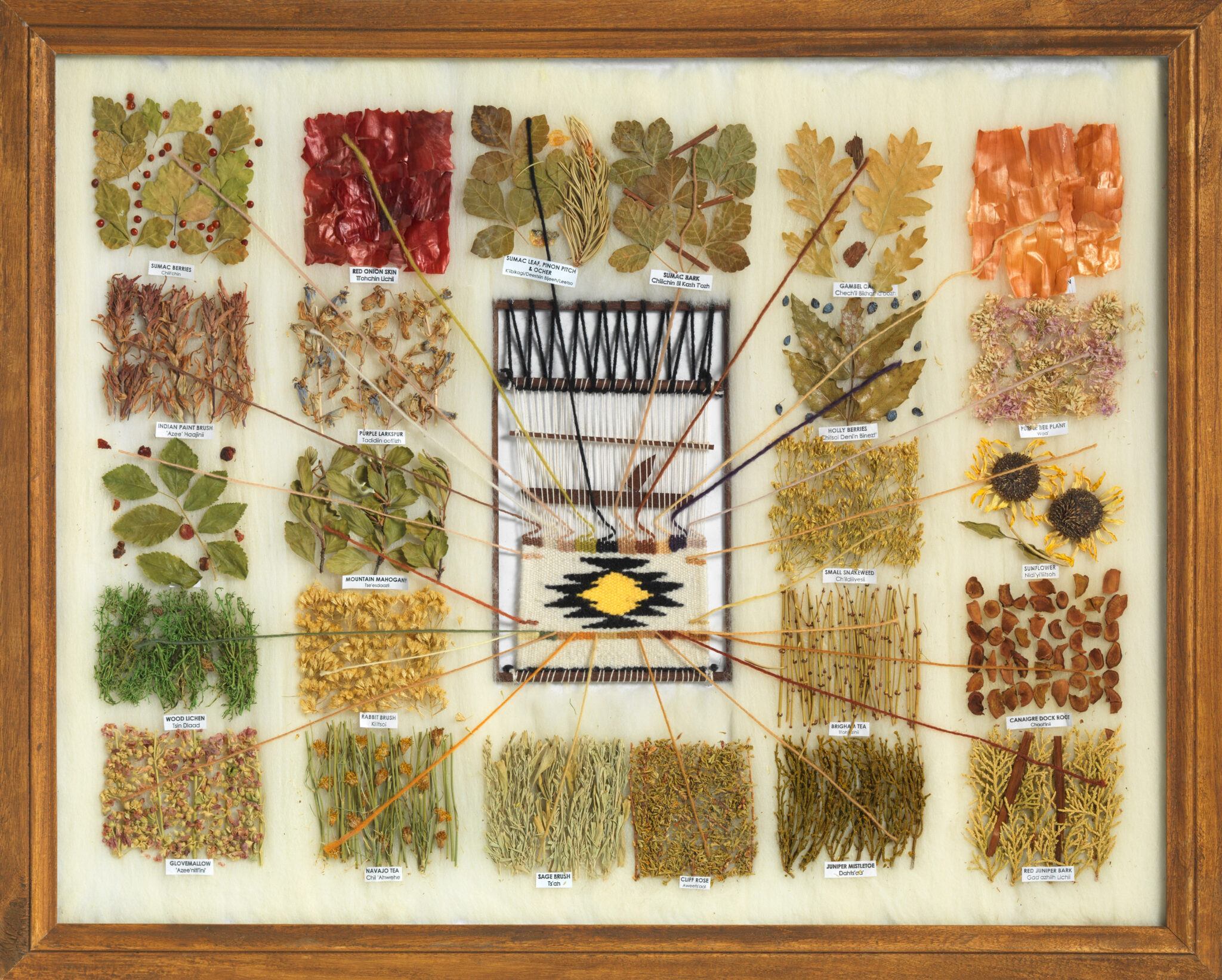Roselyn Washburn
Diné/Navajo dye chart, 2019
Courtesy of John McCulloch, Teec Nos Pos Trading Post
Photograph: Bruce White

Roselyn Washburn
Diné/Navajo dye chart, 2019
Courtesy of John McCulloch, Teec Nos Pos Trading Post
Photograph: Bruce White
Explore each plant on the dye chart to learn more about their use, their Navajo and botanical names, images of collected specimens, and corresponding dye recipes, when available (taken from Navajo Native Dyes, Their Preparation and Use publication).
Dye charts serve as vital tools in the visual documentation and representation of Indigenous knowledge related to Navajo textile production.1 First created in the 1950s by Mabel Burnside Myers (1922–1987), a Diné (Navajo) weaver and herbalist from Pine Springs, Arizona, dye charts were conceived as guides to natural dye sources for students of weaving. Myers and other artists later began producing them for the tourist market, and they circulated throughout the Southwest in a variety of contexts and venues. While several weavers continue to make dye charts today, often selling them to local trading posts and galleries, they have also been reproduced as posters and commodified as works of art alongside Navajo weavings.
Each dye chart includes a miniature textile, mounted on a vertical loom and centered in the framed composition. A weblike constellation of colored yarn extends outward from the textile, each strand corresponding to a sample of the dried plant used to make its dye. The number of plant specimens varies depending on the size of the chart, and they are arranged in rows with botanical identifications listed below, sometimes in both English and Diné Bizaad (the Navajo language).
As expressions of the Southwestern landscape and its native plants, dye charts provide a multisensory index of place. They are an atlas—a mental map—of Navajo weaving worlds in miniature, providing an important material record of Indigenous ways of knowing the landscape and its natural colorants. This exhibition is the first to examine dye charts as a way of understanding craft processes and as a mode of visualization and subsequent preservation of localized knowledge systems about color. Considering their dual position as objects of Native innovation and as products of intercultural consumption, dye charts inform our understanding of postcolonial representation, Indigenous ecologies and ethnobotany, the marketing of the American Southwest and its crafts, and histories of intercultural exchange.
When available, dye recipes are from Stella Young and Nonabah G. Bryan, eds., Navajo Native Dyes: Their Preparation and Use (United States Department of the Interior, Bureau of Indian Affairs, Branch of Education, 1940); and Isabell Deschinny, Native Plant Dyes (Window Rock, Arizona, 1984).
All botanical specimen images are courtesy of the United States National Herbarium, Smithsonian Institution.
For additional information on Navajo ethnobotany, see the work of Diné botanist and geologist Arnold Clifford: Andi Murphy, “Nature the Navajo Way,” New Mexico, May 4, 2020, updated February 23, 2022.
View a list of common dye plants and their Navajo names.
For additional information on Navajo ethnobotany, see the work of Diné botanist and geologist Arnold Clifford: Andi Murphy, “Nature the Navajo Way,” New Mexico, May 4, 2020, updated February 23, 2022.